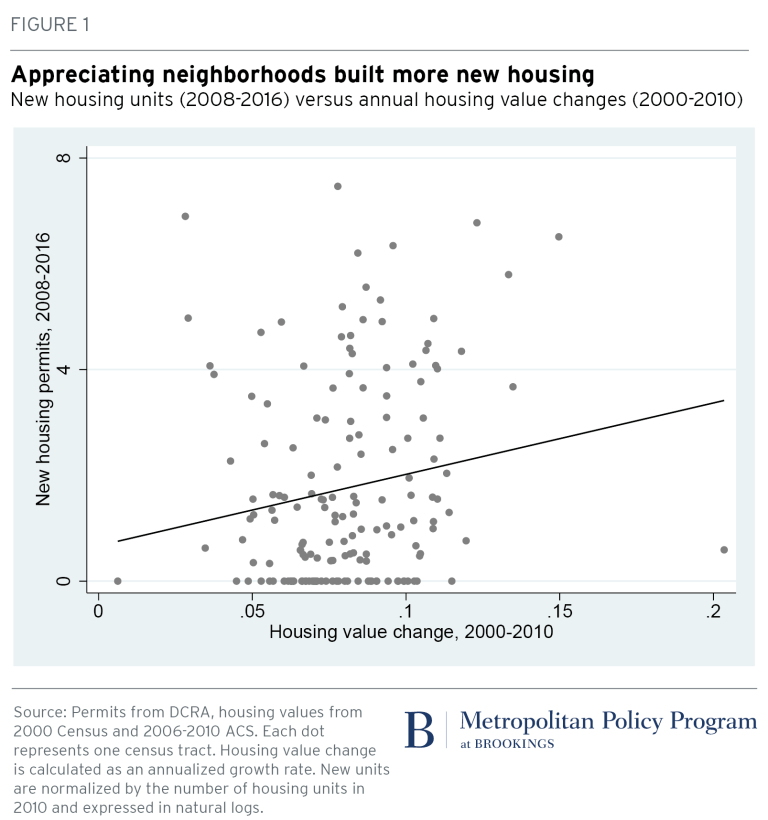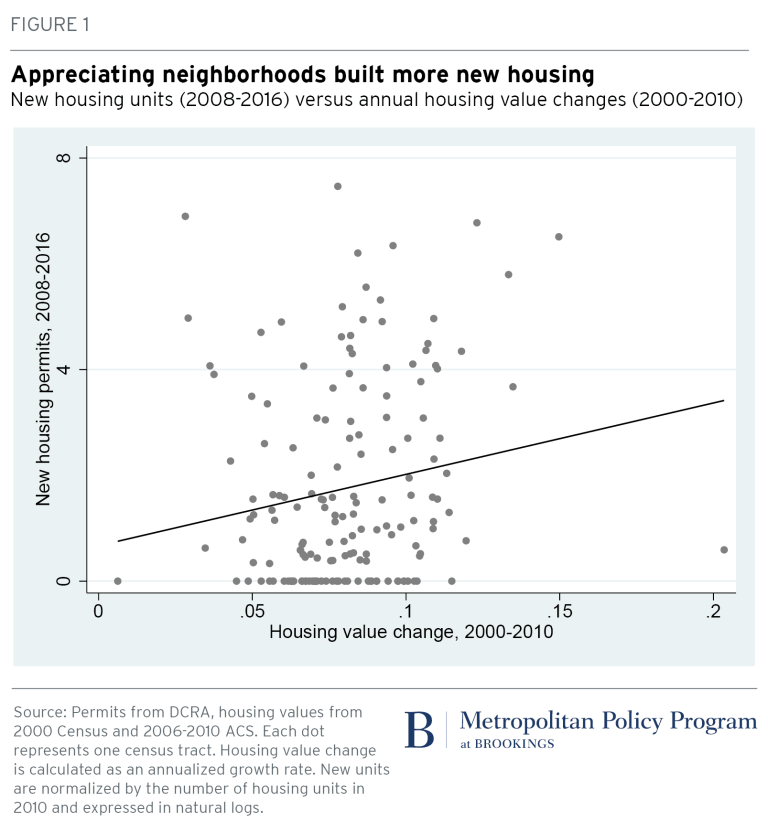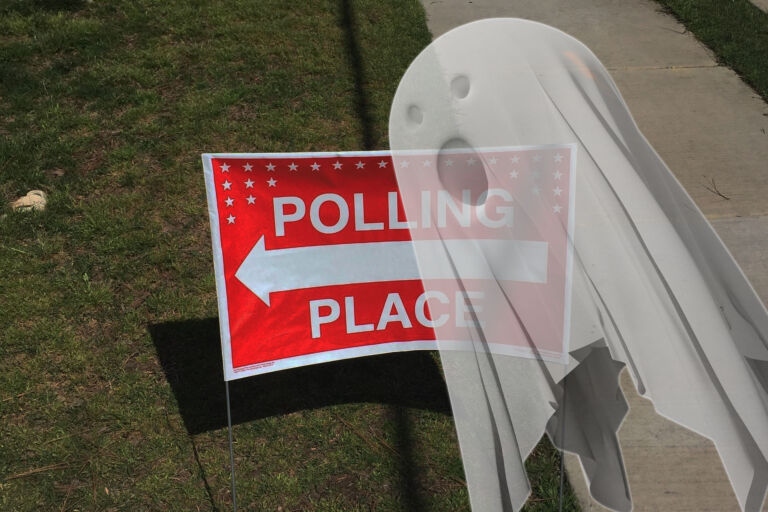Recent zoning reforms are helping free people in high-demand urban settings to create some affordable housing arrangements, such as adding accessory dwelling units (ADUs) like granny flats and converting garages into living spaces. In 2018 Minneapolis became the first major city to eliminate single-family zoning and allow multiple dwelling units per residence. Oregon become the first state to do so in 2019. Also in 2019 California relaxed zoning rules allowing for accessory dwelling units like granny flats and garage units.
New research from the Metropolitan Policy Program at Brookings shows that restrictive zoning is doubly harmful to increasing housing options in high-demand urban areas. This study examined the impact of zoning regulations on housing supply in Washington, D.C. from 2000 to 2010.
A fundamental principle of economics is that when the price of goods or services increases, producers will increase supply. Therefore, when the price of housing in certain cities or neighborhoods increases, developers should build more homes. And indeed, District neighborhoods that saw higher growth in housing values did see more new housing construction—but only where restrictive zoning didn’t impede growth.
Home prices going up in an area while the housing stock is unchanged indicates that, yes, that area is in high demand. So people should be building more housing options in that area. And Brookings found just that:

Bringing new supplies would also have a downward effect on prices. That’s not to say they would decrease, because there are too many other factors at play, but additional supplies would keep prices from being as high as they would otherwise be.
That’s when people are relatively free to bring in more stock. But Brookings also found that restrictive zoning prevented new supplies and had another effect that made housing prices even more expensive:
Restrictive zoning makes affordability worse in two ways. Not only does it limit the amount of new construction, it also encourages property owners in expensive neighborhoods to upgrade the size or quality of existing structures, thereby making them still more pricey. For instance, many single-family homes or rowhouses in high-value neighborhoods expand the size of the house by adding another story on top, or “bumping out” the rear exterior walls (Figure 4). These expansions or interior upgrades such as kitchen and bathroom renovations increase the value of the home but do not expand the number of homes in a neighborhood. Additions and alterations benefit existing homeowners, but make it more difficult for new residents to buy into those neighborhoods.

Note: the Brookings paper focused on new single-family homes and large apartment buildings and didn’t include ADUs.


